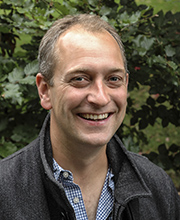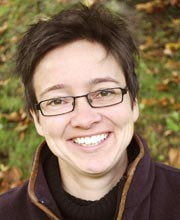I’ve recently returned from Tübingen University in SW Germany: I had an invitation to visit from Professor Jörn Staecker, whom I’d last met when we were both giving lectures in Korkyt Ata Kyzylorda State University in Kazahkstan. Tübingen has a strong commitment to archaeology, with a research centre in medieval archaeology and I was also visiting because Reading has recently established a strategic partnership with the university to develop academic contacts. Last year Tübingen gained a prestigious government grant to run a multi-disciplinary research project on resources, their perception and exploitation. The project has many themes and some deal specifically with the medieval period: they involve the analysis of past landscapes in the area of the south Black Forest and the impact of resource use and management by monasteries and castles in the area around the Bodensee (Lake Constance), on the border between Germany, Austria and Switzerland.

Tübingen Castle, the home of the university’s archaeology department
It was only in the 1180s that there was a general intensification of resource use and this could be related to the development of specific identities for both the urban workers and the peasantry which gave both the towns and countryside a different character.
I also had individual meetings with post-doctoral fellows and PhD students researching aspects of medieval landscapes and also workshops with other postgrad students working on the medieval aspects of the resources project.
I also visited and discussed sites which I had long wanted to see, such as the great Cistercian monastery of Bebenhausen, where I was shown around by Christina Vossler who had written up the recent excavations for her PhD. We also visited the Benedictine monastery of Hirsau, famous for its pioneering role in the spreading of the Cluniac reform in southern Germany. The monastery was founded in the early eleventh century and parts of that monastic church survive. However, by the end of the same century Hirsau had become such an important pilgrimage centre that a new monastery was built less than a kilometre away, a very unusual development. I was also shown Lichtenstein, the site of a medieval castle (surviving as a set of earthworks and some standing masonry) in a stunning and defensive position overlooking a steep-sided river valley. Close by there is a Gothick castle built in the 1840s by the Dukes of Würtemberg.

Bebenhausen: the abbey church
Archaeology (Palaeolithic, late prehistory, classical and medieval) is located in the castle of Tübingen , which probably originated in the eleventh century but was converted into a palace in the seventeenth century. It overlooks the historic town of Tübingen, which has a medieval market and collegiate church at its core and its streets are lined with large timber-framed town houses of the sixteenth century: in all, a remarkable survival of a late medieval town.

The nineteenth-century castle of Lichtenstein
There will be further exchanges between the departments: Aleks Pluskowski and Alex Brown for example will go to Tübingen in January to talk about the Baltic Crusades project and Jörn Staecker will come to Reading for the first Medieval Social Archaeology Research Group workshop on religious transformations. Future exchanges for postgraduates were discussed as well as combined undergraduate fieldtrips.
About today’s blogger
 Professor Grenville Astill specialises in monasticism, industry, urban and rural settlement in medieval North Western Europe. He leads one of the longest running and most extensive research projects on a medieval monastery at Bordesley Abbey (http://www.reading.ac.uk/bordesley/) alongside a reconsideration of the process of medieval urbanisation. He has also conducted a research project in Brittany which tracks change in the countryside from the later Bronze Age to the 1920s using a combination of archaeological, documentary and building evidence.
Professor Grenville Astill specialises in monasticism, industry, urban and rural settlement in medieval North Western Europe. He leads one of the longest running and most extensive research projects on a medieval monastery at Bordesley Abbey (http://www.reading.ac.uk/bordesley/) alongside a reconsideration of the process of medieval urbanisation. He has also conducted a research project in Brittany which tracks change in the countryside from the later Bronze Age to the 1920s using a combination of archaeological, documentary and building evidence.
 Dr Jim Leary has recently been awarded a grant from The Leverhulme Trust to fund a project entitled ‘Extending Histories: from Medieval Mottes to Prehistoric Round Mounds’, which will run until the end of 2017.
Dr Jim Leary has recently been awarded a grant from The Leverhulme Trust to fund a project entitled ‘Extending Histories: from Medieval Mottes to Prehistoric Round Mounds’, which will run until the end of 2017.

 This is the
This is the



 Congratulations to Dr Hella Eckardt, who has won the Faculty of Science prize for Best Research Output for her single author volume: Objects and Identities – Roman Britain and the North-western Provinces.
Congratulations to Dr Hella Eckardt, who has won the Faculty of Science prize for Best Research Output for her single author volume: Objects and Identities – Roman Britain and the North-western Provinces.



